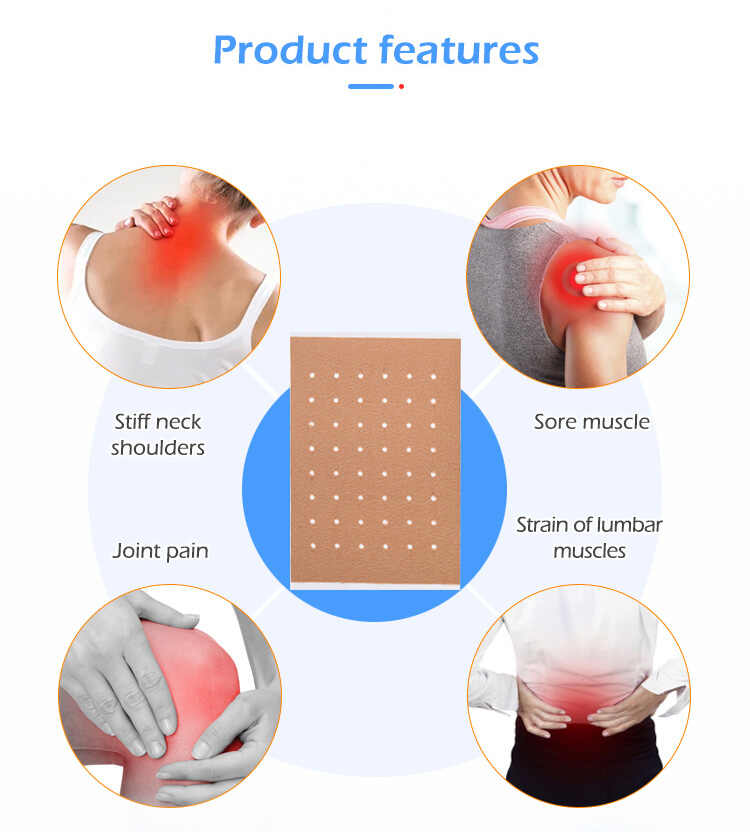Are Natural Ingredients Always Safe in Custom Sports Pain Patches? What Every Brand Owner Should Know
With rising consumer demand for “clean,” “organic,” and “plant-based” solutions, many brands are turning to Custom Sports Pain Patches made with natural ingredients. This trend is also driven by the growing popularity of wellness products among athletes, active consumers, and individuals seeking drug-free alternatives to pain relief. But here’s the critical question: Are natural ingredients always safe in Sports Pain Patches?
The short answer is no—“natural” does not automatically mean “safe.” In this article, we explore the safety and regulatory considerations of using natural ingredients in Private Label Sports Pain Patches and provide practical insights for working with a Sports Pain Patches Manufacturer, Sports Pain Patches OEM, or Sports Pain Patches Supplier.

1. Understanding What “Natural” Means in Sports Pain Patches
The term “natural” is not regulated by the FDA when it comes to topical patches. As a result, it can mean different things depending on the brand, the formulation, or the supplier.
Common “Natural” Ingredients in Sports Pain Patches:
Menthol (from peppermint oil)
Camphor (from camphor tree bark)
Capsaicin (from chili peppers)
Arnica montana
Turmeric (curcumin extract)
Eucalyptus oil
Ginger extract
Lavender oil
These ingredients are often chosen for their anti-inflammatory, warming, or cooling effects, which make them ideal for Custom Sports Pain Patches intended to relieve muscle soreness, joint pain, or strain injuries.
2. Natural Ingredients Can Still Cause Adverse Reactions
Many customers assume that “natural” means “harmless,” but this is a dangerous misconception. Even plant-derived ingredients can trigger skin irritation, allergies, burns, or systemic reactions, especially if improperly dosed or used on sensitive skin.
Risks to Watch Out For:
Menthol: Can cause a burning sensation in high concentrations (above 10%). Overuse may also lead to skin desensitization.
Capsaicin: Effective for pain relief, but often causes initial burning and stinging sensations.
Arnica: Known for bruising relief, but can be toxic if absorbed in large amounts or used on broken skin.
Essential Oils: Eucalyptus, lavender, and tea tree oils may cause contact dermatitis in some users.
Conclusion: Partnering with a professional Sports Pain Patches OEM ensures that natural ingredients are used at safe and effective levels—backed by testing and regulatory standards.
3. Formulation Matters: Natural Doesn’t Mean Weak or Ineffective
Some believe natural ingredients are milder and therefore safer. In fact, many natural compounds are pharmacologically active and can be just as potent as synthetic ones.
Example:
Capsaicin works by depleting substance P (a pain signal neurotransmitter), making it highly effective—but improper formulation may result in skin burns or rebound pain.
Action Step:
Work with an experienced Sports Pain Patches Manufacturer that has a qualified R&D team to balance potency and safety in natural ingredient formulations.
4. Regulatory Oversight Still Applies to Natural Ingredients
Just because an ingredient is natural doesn’t mean it’s exempt from FDA regulations. If your Private Label Sports Pain Patches make therapeutic claims (e.g., “relieves pain,” “reduces inflammation”), they are subject to the OTC Drug Monograph or may require a New Drug Application (NDA).
Regulatory Requirements Include:
Ingredient inclusion in the FDA OTC Monograph
NDC listing if marketed as an OTC drug
Clear and compliant labeling
GMP manufacturing standards
Key Tip: Always ensure your Sports Pain Patches Supplier sources natural ingredients that are monograph-compliant and backed by safety data.
5. Quality and Source of Natural Ingredients Matter
Not all natural ingredients are equal. Their efficacy and safety depend on the source, extraction method, and purity. For example:
Synthetic menthol vs. natural menthol from peppermint oil
Whole plant extract vs. standardized active compounds
Low-grade essential oils may be contaminated with allergens or pesticides
Ask Your Sports Pain Patches OEM:
Are your natural ingredients third-party tested?
Do you use standardized extracts or whole herbs?
Are your ingredients sustainably sourced and traceable?
Working with a reputable Sports Pain Patches Manufacturer ensures your Custom formulations are crafted with high-quality natural ingredients, not just marketing buzzwords.
6. Customization Increases the Risk—and the Responsibility
Creating Custom Sports Pain Patches with unique natural blends may set your product apart, but it also comes with increased liability. Unique combinations that fall outside of FDA-approved monographs may require:
Additional safety testing
Stability studies
Skin irritation patch testing
Before launching Private Label Sports Pain Patches, request formulation documentation and Certificates of Analysis (COA) from your Sports Pain Patches Supplier. Always test custom blends on a small group of users to identify any adverse reactions.
7. Educating Your Customers Is Part of Product Safety
Even with a fully compliant and safe formulation, misuse by consumers can lead to side effects. You have a responsibility to communicate:
Usage instructions
Patch duration limits
Warnings for sensitive skin
Allergens like menthol or essential oils
Ensure your Private Label Sports Pain Patch packaging includes:
An FDA-compliant Drug Facts panel
Clear directions and warnings
Allergy information
Storage and handling guidance
8. Working with the Right Sports Pain Patches Manufacturer or OEM
To ensure your Custom Sports Pain Patches are both effective and safe, partner with a Sports Pain Patches OEM that:
Has GMP-certified facilities
Understands both synthetic and botanical ingredient safety
Provides full transparency on ingredient sourcing
Conducts in-house or third-party testing
Your patch is only as safe as your supply chain. Choosing a reliable Sports Pain Patches Supplier gives your brand peace of mind and product integrity.
9. Final Considerations for Private Label Brands
When launching a natural Private Label Sports Pain Patch, don’t just focus on marketing. Prioritize:
Ingredient safety and sourcing
Clinical efficacy and user feedback
FDA and OTC monograph compliance
Batch testing and quality control
This ensures your product isn’t just “natural”—but safe, effective, and trustworthy.
Conclusion: Natural Ingredients Are Powerful—But They Demand Caution
While natural ingredients can be a strong selling point for your Private Label Sports Pain Patches, assuming they’re always safe is a mistake. With the right Sports Pain Patches Manufacturer, thoughtful formulation, and proper regulatory diligence, you can safely offer Custom Sports Pain Patches that meet consumer expectations while protecting your brand.
Safety, quality, and compliance must guide every decision—from the first botanical extract to the final patch on the shelf.
Related Questions and Answers
Q1: Are FDA approvals required for natural ingredients in pain patches?
A1: Not always. If the ingredient falls under the FDA OTC monograph and the product follows the guidelines, separate FDA approval isn’t required.
Q2: What natural ingredients are most commonly used in Sports Pain Patches?
A2: Menthol, camphor, capsaicin, arnica, turmeric, and essential oils like eucalyptus or lavender.
Q3: Can I customize natural ingredients in my Private Label Sports Pain Patches?
A3: Yes, but customization requires extra testing and compliance checks to ensure safety and regulatory approval.
Q4: What are the risks of using low-quality natural ingredients?
A4: Impurities, allergens, inconsistent potency, and contamination can cause irritation or product recalls.
Q5: How do I know if my Sports Pain Patches Supplier uses safe natural ingredients?
A5: Ask for sourcing documentation, COAs, and testing data for each batch of ingredients.
By taking a science-based approach and partnering with a qualified Sports Pain Patches OEM, you can safely leverage the power of natural ingredients while ensuring your Custom Sports Pain Patches remain compliant, effective, and trusted by your target audience.






